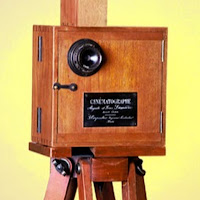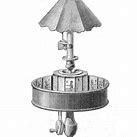You probably remember him as the famous inventor who invented the Light bulb💡 Edison was an American inventor and businessman and developed many devices that influenced everyone in the world. The devices invented include the phonograph, the camera and the kinetoscope. The Kinetoscope is one of the first cinematographic devices, created in (1894). It was designed to allow one person at a time to watch movies through a peephole at the top of the device. The Kinetoscope was not a movie projector; however, it was touted as the basic approach that would eventually become the main product for all film screenings before the invention of video. It created the illusion of movement by placing a perforated film strip with sequential images on a light source with a high-speed shutter.
But earlier before all this great development with cinematography 1n 1877 a man named Charles Reynaud a French inventor was responsible for the first projected animated cartoons. Reynaud created the Praxinoscope in 1877 and then, on 28 October 1892 he projected the first animated film in public in Paris.
In my conclusion with this post, in my research it was a bit confusing who invented the cinematography first but there was a lot of competition amongst these great minds of inventors, and they all contributed to the great age of animation. / BJ🙈🙉🙊






